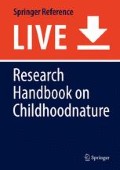Abstract
There has been much debate about where the boundaries lie that would mark the arrival of the new epoch of the Anthropocene. There have been a number of possibilities proposed: the start of the Industrial revolution in the eighteenth century or the beginning in the mid-twentieth century known as the great acceleration of population, carbon emissions, biodiversity loss, plastic production, and the beginning of nuclear age with the first atomic bombs spreading detectable radiation to every stratum of the planet. But for many scholars in the humanities, these arguments are not as relevant as what taking up the premise or challenge of the Anthropocene provides. As an unsettling ontology that disrupts a persistent “humanist” paradigm, the concept of the Anthropocene allows new conversations to happen around human-dominated global change, human exceptionalism, and the nature/culture divide. In this chapter through stories from fieldwork with children in La Paz, I will propose the means for considering the ontological openings of the naming of the Anthropocene for the field of childhoodnature.
References
Aldred, J. (2014). Past movements, tomorrow’s anchors. On the relational entanglements between archaeological mobilities. In J. Leary (Ed.), Past mobilities: Archaeological approaches to movement and mobility (pp. 21–48). Farnham, UK: Ashgate Publishing.
Andersen, K. (2014). Mind over matter? On decentring the human in human geography. Cultural Geographies, 21(1), 3–18.
Barad, K. (1996). Meeting the universe halfway: Realism and social constructivism without contradiction. Feminism, Science, and the Philosophy of Science, 161–194.
Barad, K. (2007). Meeting the universe halfway: Quantum physics and the entanglement of matter and meaning. Durham, NC/London, England: Duke University Press.
Braidotti, R. (2013). The posthuman. Cambridge: Polity Press
Chawla, L. (2002). Growing up in an urbanizing world. London: UNESCO/Earthscan.
Davies, J. (2016). The birth of the Anthropocene. Berkeley, CA: University of California Press.
Deleuze, G., & Guattari, F. (2004). A thousand plateaus (B. Massumi, Trans.).London: Continuum.
Derrida, J. (2005). On touching – Jean-Luc Nancy. Stanford, CA: Stanford University Press.
Driskell, D. (2002). Creating better cities with children and youth. London: UNESCO/Earthscan.
Edgeworth, M. (2014). Enmeshments of shifting landscapes and embodied movements of people and animals. In J. Leary (Ed.), Past mobilities: Archaeological approaches to movement and mobility. Farnham: Ashgate.
Gan, E., Tsing, A., Swanson, H., & Bubandt, N. (2017). Introduction: Haunted landscapes of the Anthropocene. In A. Tsing, H. Swanson, E. Gan, & N. Bubandt (Eds.), Arts of living on a damaged planet. Minneapolis, MN: University of Minnesota Press.
Grosz, E. (2010). Feminism, materialism, and freedom. In D. Coole & S. Frost (Eds.), New materialisms: Ontology, agency and politics (pp. 139–157), Durham/London: Duke University Press.
Haraway, D. (2015). Anthropocene, Capitalocene, Plantationocene, Chthulucene: Making kin. Environmental Humanities, 6(1), 159–165. http://environmentalhumanities.org.
Haraway, D., Ishikawa, N., Gilbert, S. F., Olwig, K., Tsing, A. L., & Bubandt, N. (2015). Anthropologists are talking – about the Anthropocene. Ethnos, 81(3), 535–564. https://doi.org/10.1080/00141844.2015.1105838.
Hayles, N. K. (2003). Afterword: The human in the posthuman. Cultural Critique, 53, 134–137.
Ingold, T. (2010). Bringing things to life: Creative entanglements in a world of materials. Manchester: National Centre for Research Methods, University of Manchester.
Ingold, T., & Vergunst, J. (2008). Ways of walking: Ethnography and practice on foot. Farnham: Ashgate Publishing.
Leary, J. (Ed.). (2015). Past mobilities: Archaeological approaches to movement and mobility. Farnham: Ashgate Publishing.
Lloro-Bidart, T. (2015). A political ecology of education in/for the Anthropocene. Environment and Society: Advances in Research, 6(1), 128–148. http://journals.berghahnbooks.com/environment-and-society.
Lorimer, J. (2012). Multinatural geographies for the Anthropocene. Progress in Human Geography, 36(5), 593–612. https://doi.org/10.1177/0309132511435352.
Macfarlane, R. (2016). Generation Anthropocene: How humans have altered the planet for ever. The Guardian. 1 April, viewed 15 May 2016. http://www.theguardian.com.
Malone, K. (2017). Ecological posthumanist theorising: Grappling with child-dog-bodies. In K. Malone, S. Truong, & T. Gray (Eds.), Reimagining sustainability in precarious times. Singapore, Singapore: Springer.
Malone, K. (2018). Children in the Anthropocene: Rethinking sustainability and child friendliness of cities. London, England: PalgraveMacmillan.
Milton, K. (2005). Anthropomorphism or egomorphism? The perception of non-human persons by human ones. In J. Knight (Ed.), Animals in person: Cultural perspectives on human-animal intimacies (pp. 255–269). New York, NY: Berg.
Moore, R. (1986). Childhood’s domain: Play and place in child development. Kent: Croom Helm.
Nancy, J.-L. (1997). The sense of the world. Minneapolis, MN: University of Minnesota Press.
Rautio, P. (2017a). Thinking about life and species lines with Pietari and Otto (garlic breath). Trace: Finnish Journal for Human-Animal Studies, 3, 94–102.
Rautio, P. (2017b). “A super wild story”. Shared human–pigeon lives and the questions they beg. Qualitative Inquiry, 23(9), 722–731.
Rose, D. B. (2013). Wild dog dreaming: Love and extinction. Charlottesville, VA: University of Virginia Press.
Sheller, M., & Urry, J. (2006). The new mobilities paradigm. Environment and Planning A, 38(2), 207–226. https://doi.org/10.1068/a37268.
Smith, M. (2013). Ecological community, the sense of the world, and senseless extinction. Environmental Humanities, 2, 21–41. https://doi.org/10.1215/22011919-3610333.
Taylor, A., & Pacini-Ketchabaw, V. (2015). Learning with children, ants, and worms in the Anthropocene: Towards a common world pedagogy of multispecies vulnerability. Pedagogy Culture & Society, 23(4), 507–529.
Vince, G. (2014). Adventures in the Anthropocene: A journey to the heart of the planet we made. Ottawa, ON: Milkweed Editions.
Ward, C. (1978). The child in the city. London: Architectural Press.
Author information
Authors and Affiliations
Corresponding author
Editor information
Editors and Affiliations
Section Editor information
Rights and permissions
Copyright information
© 2019 Springer Nature Switzerland AG
About this entry
Cite this entry
Malone, K. (2019). Children in the Anthropocene: How Are They Implicated?. In: Cutter-Mackenzie-Knowles, A., Malone, K., Barratt Hacking, E. (eds) Research Handbook on Childhoodnature . Springer International Handbooks of Education. Springer, Cham. https://doi.org/10.1007/978-3-319-51949-4_36-2
Download citation
DOI: https://doi.org/10.1007/978-3-319-51949-4_36-2
Received:
Accepted:
Published:
Publisher Name: Springer, Cham
Print ISBN: 978-3-319-51949-4
Online ISBN: 978-3-319-51949-4
eBook Packages: Springer Reference EducationReference Module Humanities and Social SciencesReference Module Education
Publish with us
Chapter history
-
Latest
Children in the Anthropocene: How Are They Implicated?- Published:
- 07 January 2019
DOI: https://doi.org/10.1007/978-3-319-51949-4_36-2
-
Original
Children in the Anthropocene: How Are They Implicated?- Published:
- 02 April 2018
DOI: https://doi.org/10.1007/978-3-319-51949-4_36-1

